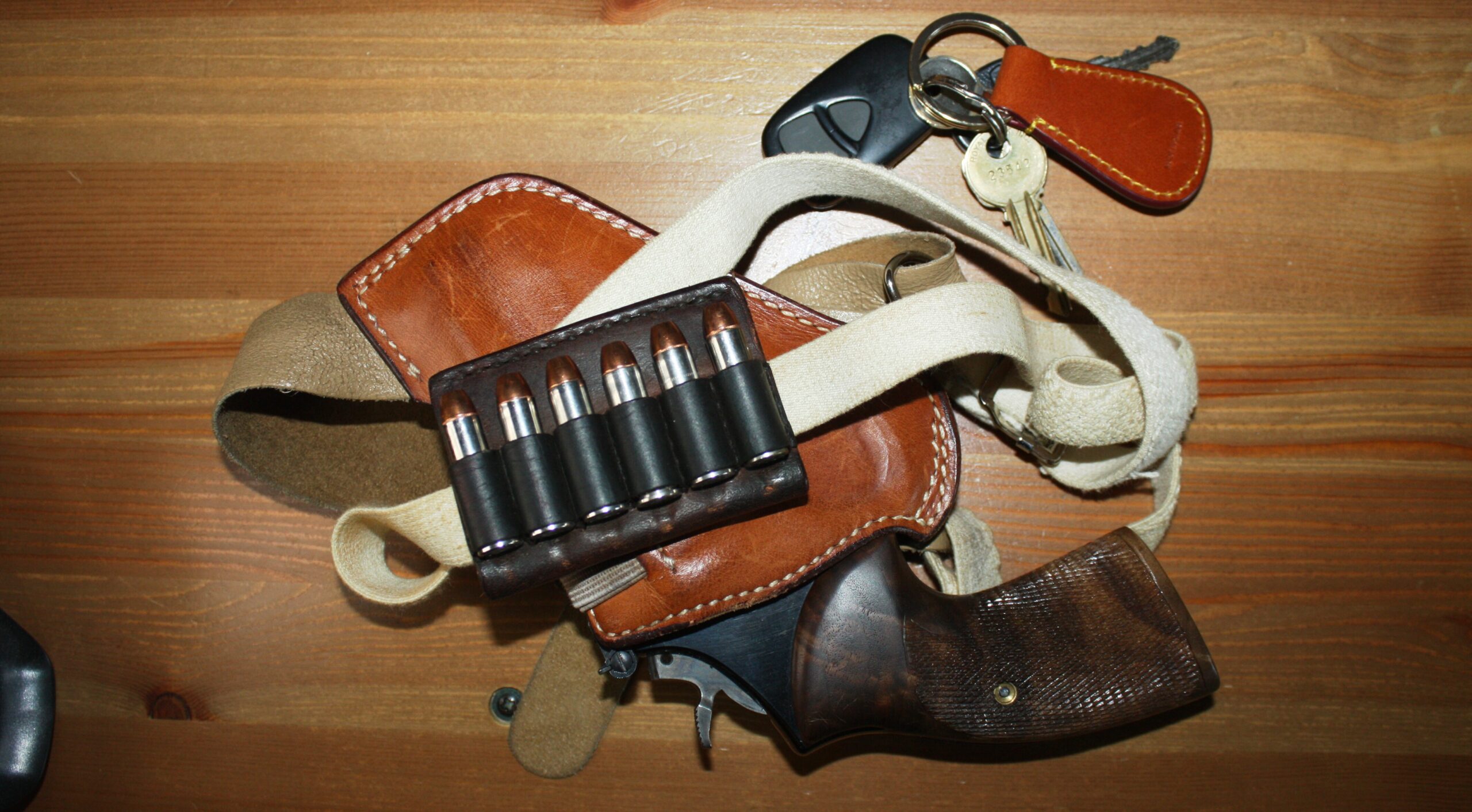
By Dave Workman
Editor-in-Chief
Revolvers are superb defensive sidearms, but they do have their limitations, which typically boils down to a matter of size—of the gun and the person carrying it—and over the decades I have personally seen some remarkably effective carry options, and a few that were alarmingly stupid.
Right up front, I’ll acknowledge having occasionally carried a rather large Model 57 Smith & Wesson .41 Magnum revolver with a 6-inch barrel, carried in an old Safariland shoulder holster, but it was concealed nicely under a winter parka. I’d never try packing that size of a handgun under a light sport jacket. Only Clint Eastwood’s Inspector Harry Callahan could get away with that, and it requires good camera angles!
Hint: If you’ve got a small body, don’t try packing a great, big hogleg.
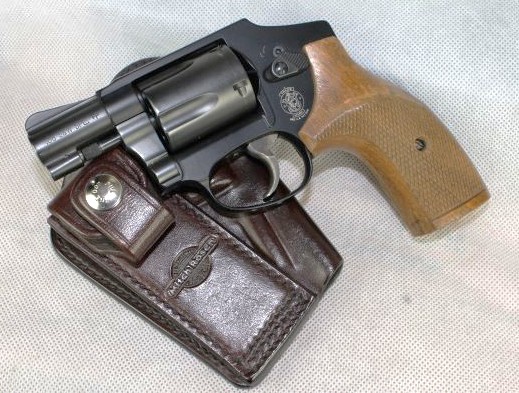
Thankfully, American gun makers have excelled over the years producing small to medium frame wheelguns, with cylinder capacities of 5, 6 or even 7 rounds, and barrels ranging from less than 2 inches to about 3 ½ inches. I’ve carried a Colt Diamondback in .38 Special with a 4-inch barrel, either in a pancake-type belt holster or a personally-built IWB rig with a rough-out exterior.
Among the favorite choices are reliable compact revolvers from Colt (examples: Detective Special, Cobra, Diamondback with a 2 ½-inch barrel), Smith & Wesson (any J-frame such as the legendary Chief’s Special, the Model 19 with 2 ½-inch barrel or Model 10 snubby, for example) and similar-sized guns from Taurus and Rossi, and let’s not overlook reliable compact revolvers from Ruger (GP100, LCR for example), and those from Charter Arms.
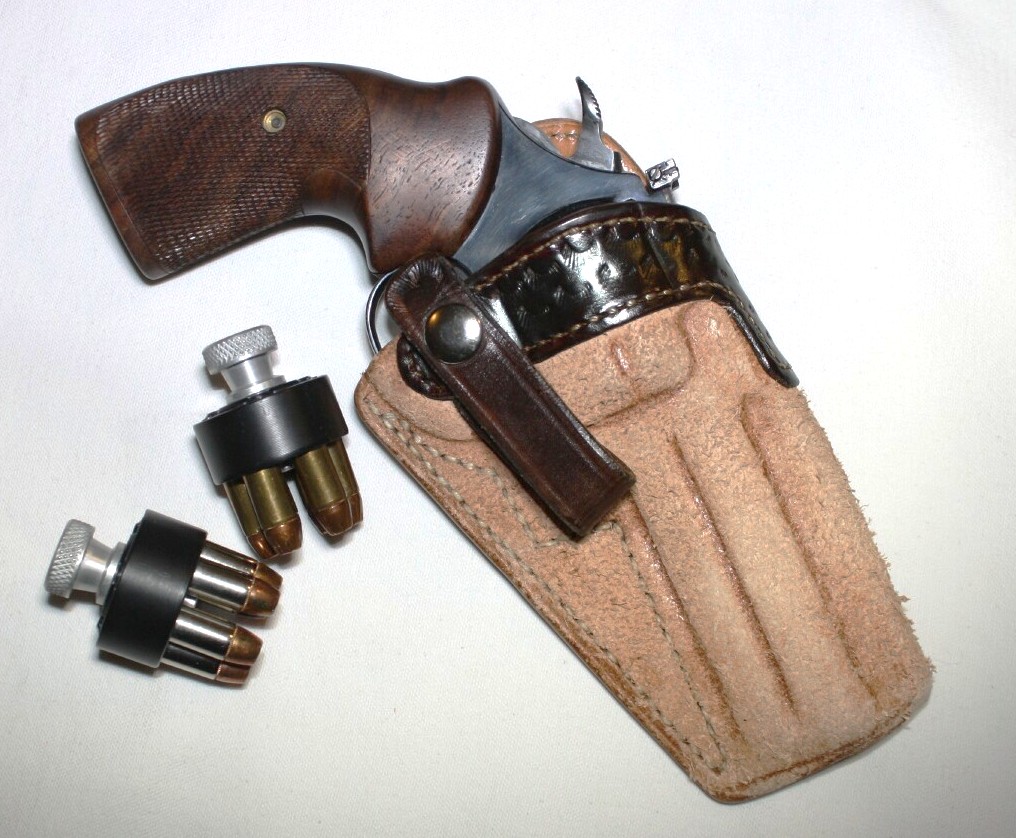
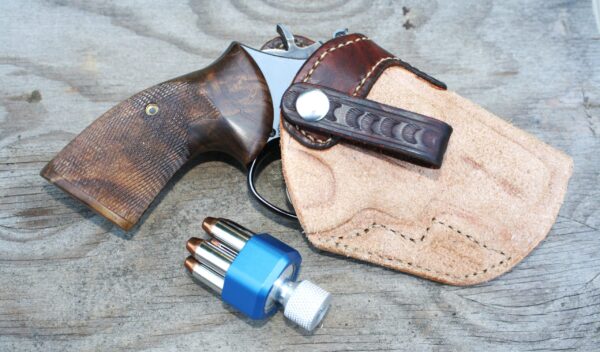
There are lots of holster options, ranging from deep cover “tuckable” holsters, which are designed to be hidden under a tucked-in shirt, to the aforementioned pancake-type rigs, IWB (inside the waistband) and shoulder holsters, all carried with some sort of cover garment.
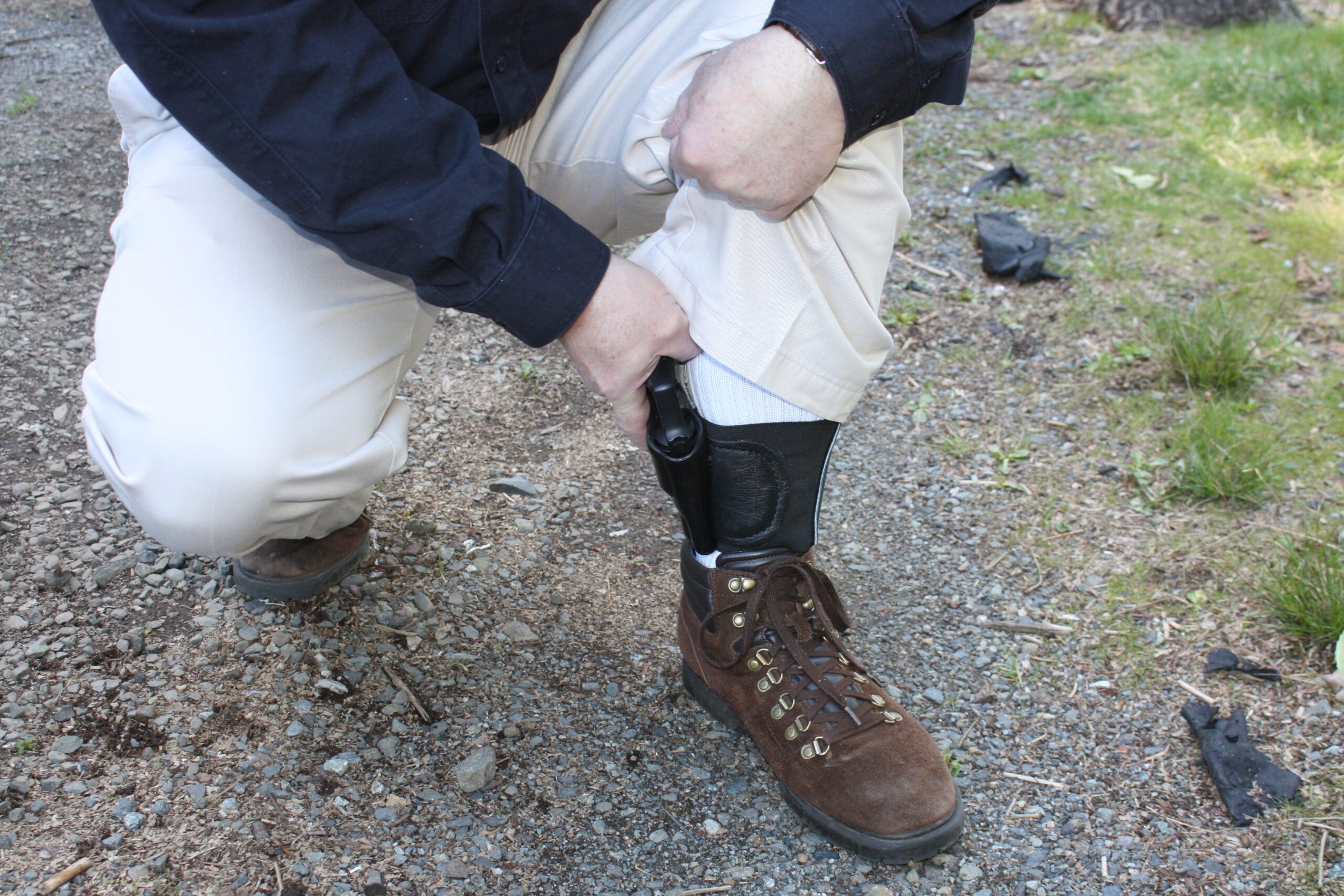
Don’t overlook the ankle holster, a design that’s been around for many years and was made famous in “The French Connection” by Gene Hackman’s “Popeye Doyle” character. Such rigs work best with lightweight revolvers built with alloy frames and steel barrels and cylinders to reduce weight.
As I’ve stressed for decades as an instructor and holster builder/designer, the purpose of concealed carry is concealment. Nobody in your immediate presence should know you are armed.

Wardrobe choices play heavily in one’s ability to conceal a revolver, and let’s be honest. There are good cover garments and bad choices made by people who can’t resist the urge to let their defensive sidearm “flash” from behind an open vest or jacket. People who make a habit of this run the risk of getting the wrong kind of attention, from police or even thugs looking to steal a handgun.
Climate and weather play a role in one’s choices, along with location. In northern tier states from Maine to Alaska, it is not unusual to spot people wearing down or fiber-fill vests at any time of the year. It’s even fashionable from early autumn until late spring or early summer. During the warmer months, one can opt for a “tactical vest” or just a heavy short-sleeve shirt.
Down south, however, one must be a bit more creative, which may be where ankle rigs and even pocket holsters often come into play.
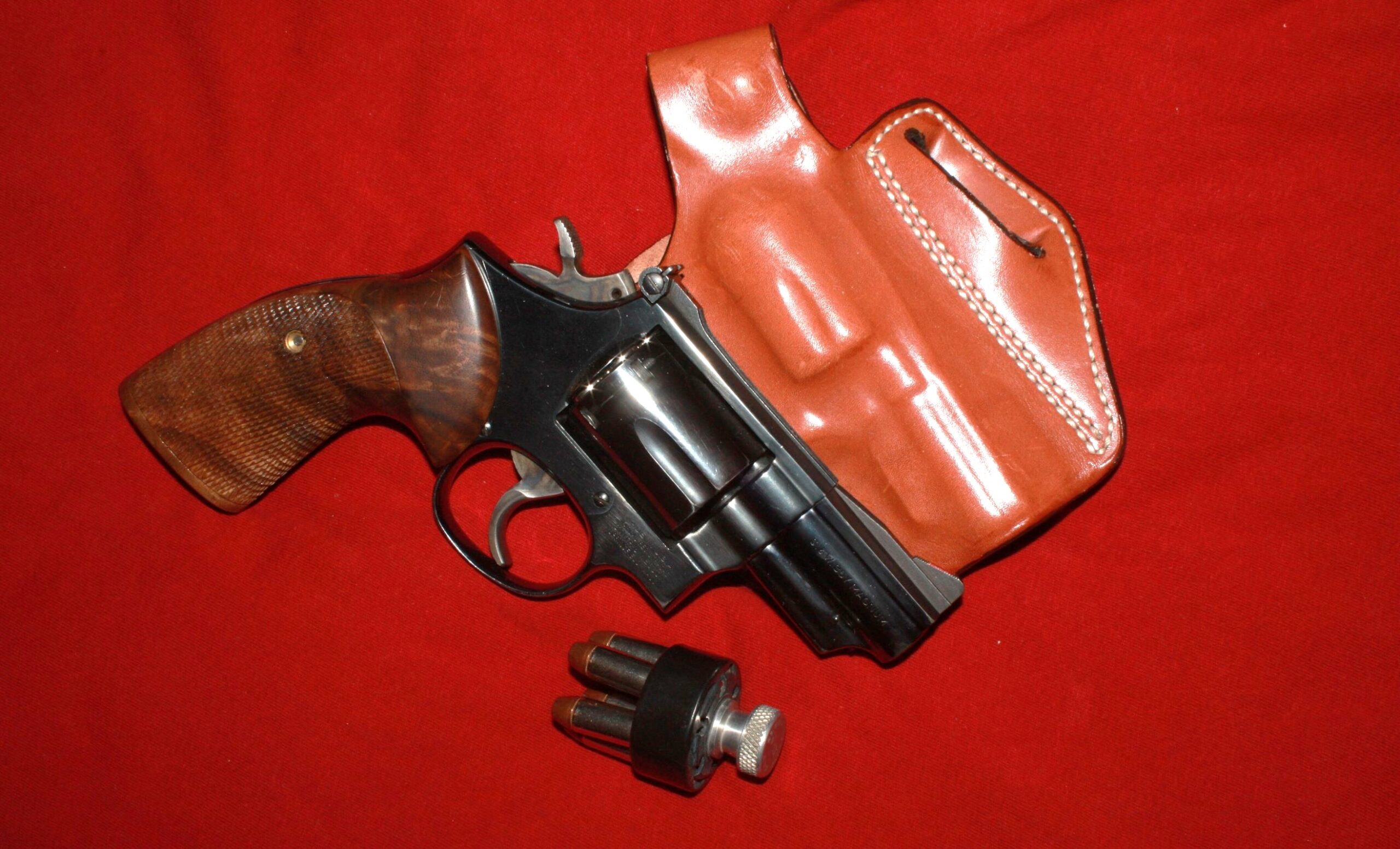
Pancake-style holsters keep sidearms very flat against the body, as do IWB rigs, and there are some very good choices available from reliable holster makers.
Ankle holsters put your sidearm in a spot where most people normally don’t look, and I have carried a Chief’s Special in an ankle holster inside a cowboy boot, and nobody was the wiser.
One shoulder holster for which I have a special fondness is the upside-down type, again made famous in a motion picture—Steve McQueen’s classic “Bullitt” in 1968 (yeah, I’m old enough to have seen it in a theater)—and this type of rig works rather well with smaller-frame revolvers and the right cover garment.

As for spare ammunition, as noted in a recent installment, speed loaders are my recommended choice and they can play a dual role, both as a source of fresh cartridges, and as a pocket weight to keep your cover garment from flapping around.
The classic “snub-nose” revolver can also be carried loose in a pocket, and I’ve known people who do this, including one man who was involved—and cleared—in a self-defense shooting several years ago. His carry choice was a 5-shot S&W in .357 Magnum, and it hid just fine in his baseball-type jacket.
Those who choose to carry wheelguns for personal protection have an array of choices, both in the gun and the holster. Shop around, try different options and be willing to reject something which doesn’t necessarily work for you.
Carry with confidence, and do it discreetly.


